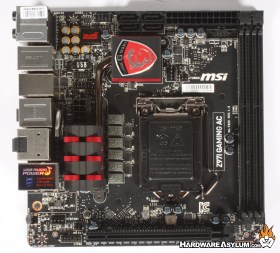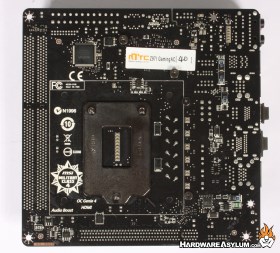Haswell Devils Canyon Performance
Author: Dennis GarciaIntroduction
When the fourth generation Core processors were released many people complained about the poor overclocking performance. Of course overclocking is influenced by several factors including quality of the processor silicon, motherboard and cooling method. Cooling is a big factor and is why large aircoolers tend to work better than the OEM heatsink and also why most extreme overclocking is done with LN2 instead of phase or chilled water. You see phase coolers only operate at a single temperature while with LN2 you can control temps and compensate for the lack of thermal transfer between the processor and the integrated heat spreader. Since the launch of Ivy Bridge the interface between these two is no longer a metallic bond but rather uses an inefficient TIM that is no better than what you would find on the OEM heatsink.
Devils Canyon is the code name for the Haswell Refresh processor that attempts to address the overclocking issues with the previous generation by changing the TIM under the heatspreader and tweaking a few things on the package. Under the surface the processor is still Haswell based silicon but with a higher clockspeed and the promise of more overclocking headroom.
Most enthusiasts will agree that overclocking performance is relative and the intent of this article is to look at the performance differences between a Core i7 4770K and the new Core i7 4790K (Devils Canyon) processor using a new 9-series motherboard. For these tests we will be using the MSI Z97I Gaming AC Mini-ITX motherboard and sending both processors to our standard motherboard testing suite.
The MSI Z97I Gaming AC is a Mini-ITX based gaming motherboard built on the new Intel Z97 chipset. The new 9-series chipsets are a replacement for the existing 8-Series versions and designed to handle the Devils Canyon refresh processors and new Broadwell based processors due out sometime in the future.
As far as Mini-ITX systems go the Z97I Gaming AC comes with a really good layout and exceptionally solid construction. It may be difficult to see but the matte black PCB is an eight layer design that not only helps properly route signals and power but provides physical stability when working on your system.
Flipping a motherboard over can tell you a lot about its construction. When looking at the traces you can see where major chips are located and even see how many PCI Express lanes are wired to the slots. Given that this board is packed with features you’ll need to expect some solder congestion. Aside from the plethora of solder joints the back of the motherboard has a few surface components and one separation in the PCB where the audio components are located.
For more information on this motherboard please check out our preview article.



